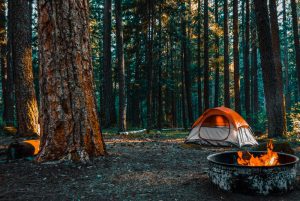Ranking as the most visited national park in the country, it’s no surprise that there’s an abundance of things to do to keep you busy.
With over 150 hiking trails, a variety of motor trails, a bunch of historic buildings, and more waterfalls than you can count, deciding how to spend your days can be a difficult task.
You’re sure to find beauty anywhere within this breathtaking park, but these 30 things are the very best for a reason. They’ll take your breath away, so you don’t want to miss your chance to check them out. Read on to learn more.
Table of Contents
1. Roaring Fork Motor Nature Trail
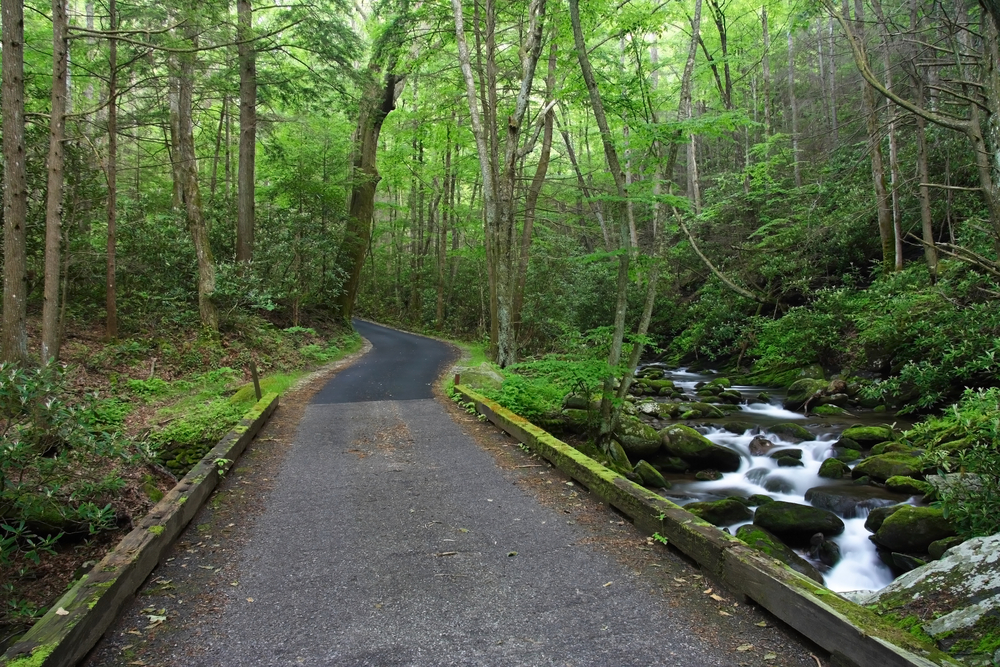
The recently established Roaring Fork Motor Nature Trail is a 6-mile scenic road that travels one way through the depths of some of the most historic sections of the national park.
The road was created to provide a trail within the national park that can be explored by vehicle, but there are many places where visitors can pull off and venture on foot. Keep in mind, this road is only drivable for passenger cars, and is not wide enough to support larger vehicles like RVs.
As soon as you enter the gates of Roaring Fork, you’ll be welcomed by the Ogle Farmstead, where you can park your car, walk amongst some of the many historic buildings you’ll find along the route, and pick up a trail map.
Enjoy the looping road surrounded by dense greenery, and feel free to stop at one of the many pull-offs and check out some of the cool hikes hidden along the way.
One of the most popular hikes along the motor trail is the 5.4-mile round-trip back hike to Rainbow Falls, which is known as the tallest single-drop waterfall in all of the Great Smoky Mountains.
Another challenging hike that provides a variety of views is the Baskin Creek Falls Trail, which takes you through the burnt trees that remain after a tragic fire. You’ll be rewarded with sweeping mountain views and a creekside hike that leads to a secluded waterfall.
Many of the historic cabins and chapels are roadside, so some visitors take on the entire motor trail without ever leaving the car. Add in large creeks, ponds, and waterfalls that can be seen from your car window and you’ll be wanting to drive the road over and over again.
2. Clingmans Dome
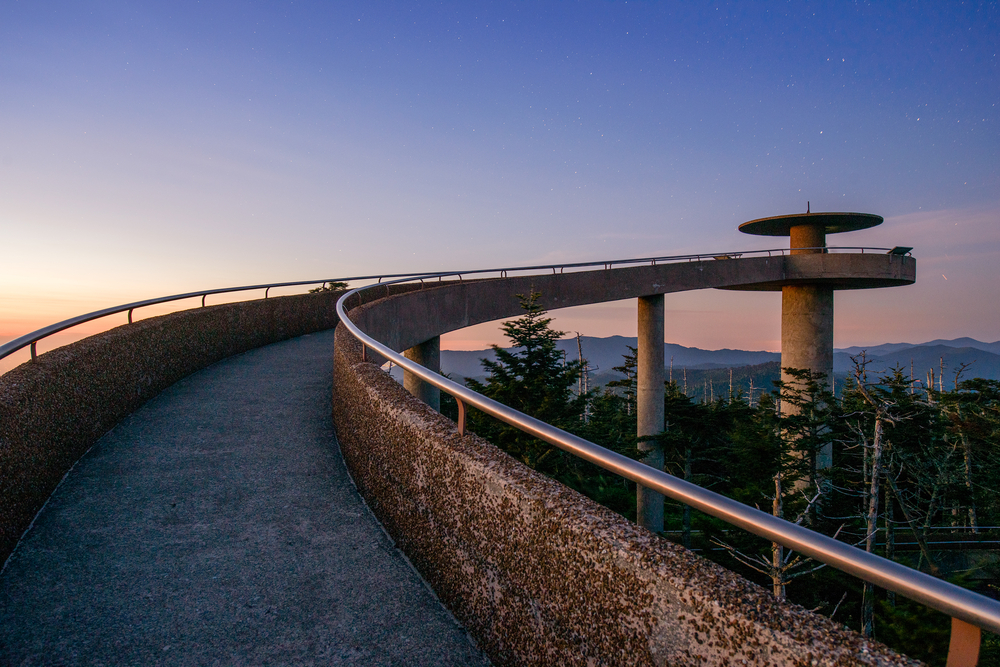
Known as the highest point in the Great Smoky Mountain National Park, Clingmans Dome is easily the most sought-after attraction in the park, so you’ll be sure to see other visitors there with you regardless of the time. Before you even start your ascent, you’ll be engulfed by never-ending mountain views from the parking lot – but the best is yet to come.
The trail leading up to the Clingmans Dome observation tower is only half a mile long, but it can feel much longer due to its steep nature – so keep that in mind when planning your trip.
Due to its 6,643 feet elevation, there’s a good chance you’ll experience snow-covered trees as late as the end of Spring and as early as the beginning of Fall, so always bring a jacket.
You can see as far out as 100 miles from the top of the observation tower, on clear days. The different mountain views in every direction will be sure to leave you breathless.
3. Fontana Lake
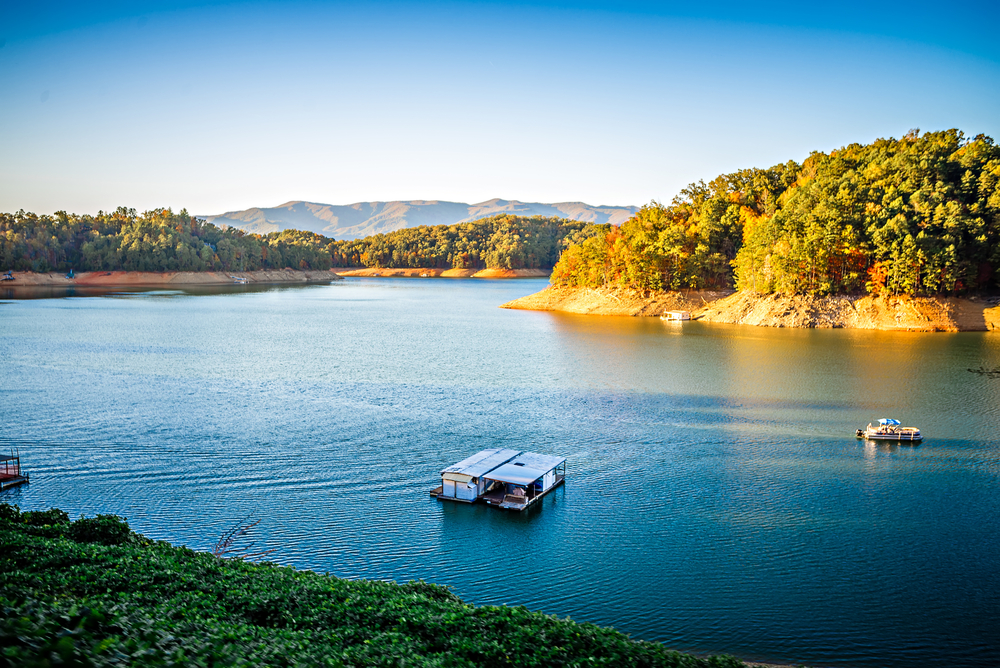
Located on the southern edge of the Great Smoky Mountains with the Blue Ridge Mountains just a stone’s throw away, Fontana Lake is one of the most scenic lakes in North Carolina, let alone the national park.
The lake spans over 10,000 acres and provides stellar opportunities for kayaking, canoeing, fishing, swimming, boating, and hiking around its borders.
Since the lake is located on the North Carolina side of the national park, it’s much quieter than the hustle and bustle you’ll find on the tourist-happy Tennessee side.
It’s here you’ll also find the Fontana Dam, the most extensive dam east of the Rocky Mountains, which was originally built to support the growing need for energy during World War II.
Head into the charming Fontana Village for lunch or rent a kayak to paddle to the secret ghost town of Proctor, where you can walk through the most remote part of the park and see the remains of a once booming lumber town.
4. Cades Cove
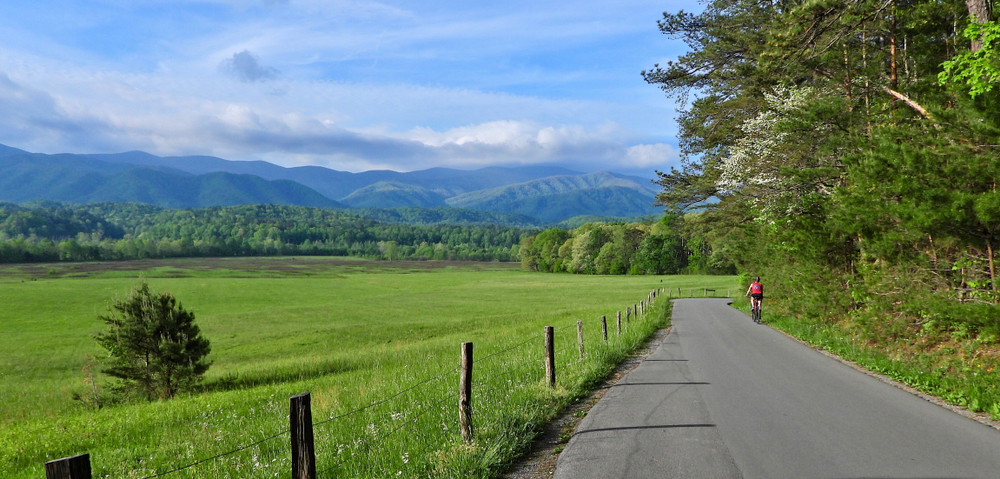
A popular destination at both sunrise and sunset, the windy 11-mile road that travels through Cades Cove is one of the best things to do in the Great Smoky Mountain National Park.
Back in the early 1800s, European settlers made their home within the confines of the cove, and remnants of their life still remain to this day.
As you drive along the one-way road, you’ll be blown away by the rolling hills, mountain views, and active wildlife – but make sure to dedicate time to stop at some of the many short trails located along the way.
Along these trails, you’ll find old log cabins, churches, and barns that tell the story of what life was like during the 19th century.
Prepare to spend 2-4 hours within the cove, as the single-lane road often sees slow-moving traffic as visitors stop to gaze at the views. Traffic jams are common when wildlife, like black bears, are spotted. A large herd of wild horses will welcome you into the cove, but keep your eyes peeled for other frequent sightings like the whitetail deer, wild turkeys, coyotes, and elk.
Take a break halfway through your journey at the visitor center, where you can check out a water-powered mill and grab a quick snack at the park store.
5. Rich Mountain Rd
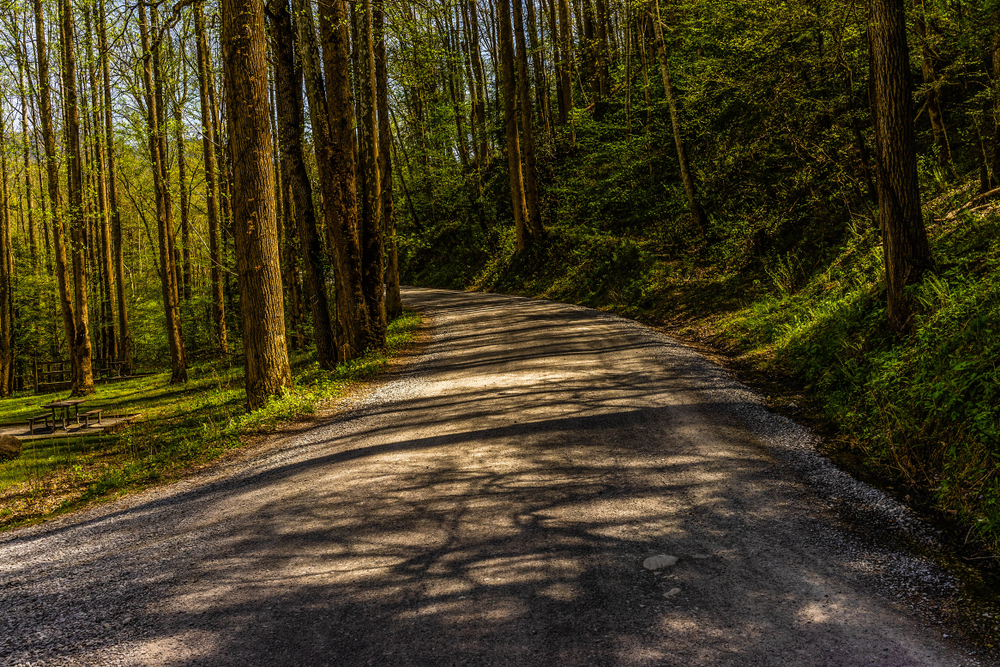
Located along the Cades Cove Loop, Rich Mountain Road is a great shortcut for visitors heading to Townsend or for anyone who enjoys a more secluded option to take in the views. The road is 7 miles long and heads only in one direction, so once you hop on this gravel road you must be committed to the journey.
Although it’s only 7 miles, it can take about an hour to drive its length as the roads are extremely windy and can get pretty rough in some areas.
You will be led up and around Rich Mountain through a dense forest, with a few pull-offs along the way to take in the views of iconic smoky mountains and Cades Cove down below.
Make sure to keep your camera ready, as you’ll pass waterfalls, streams, and hotspots for wildlife sightings as you travel along this picturesque road.
6. Appalachian Trail
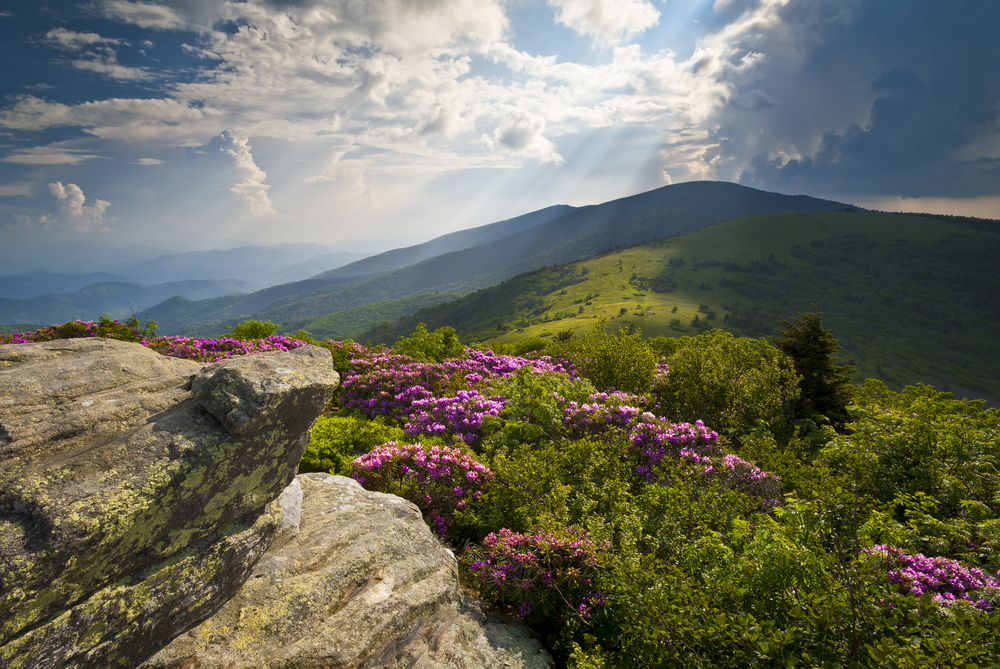
Of the 2,190 miles that make up the Appalachian Trail, 72 miles can be found within the Great Smoky Mountain National Park and the views along the way are out of this world.
The trail takes you to some of the national park’s most popular attractions; it begins at Fontana Dam and climbs up to its highest point at Clingmans Dome.
On average, it takes a solid week to complete this trail from start to finish – but many opt to hop on the trail at Newfound Gap in order to cut the travel time in half.
Along your hike, you’ll come across 15 different shelters dedicated to hikers taking on the Appalachian Trail, but in order to utilize them, you must acquire a backcountry permit and meet certain requirements.
After you’ve conquered the national park’s portion of the trail, make a pit stop at Hot Springs, North Carolina to soak those muscles after a long journey.
7. Mount LeConte
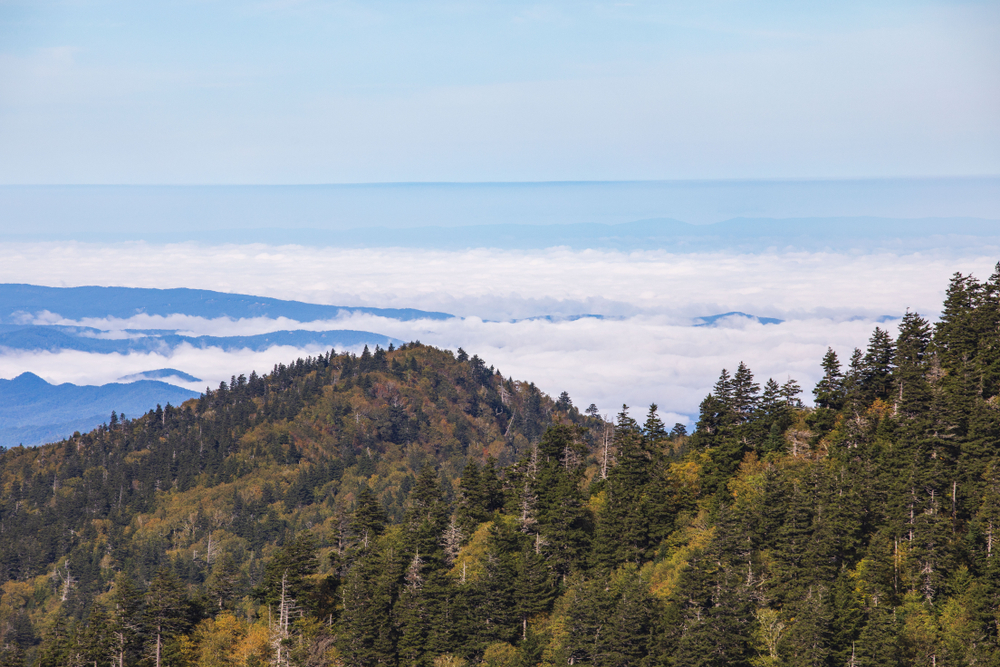
Known as one of the tallest peaks in the Great Smoky Mountain National Park, it’s easily one of the most popular locations in the national park. The mountain stands tall at 6,593 feet and is composed of 4 subpeaks, each with its own set of trails and breathtaking views:
- West Point
- High Top
- Cliff Top
- Myrtle Point
There are 5 different trails leading up to the summit, and regardless of which one you choose, you’ll be dedicating at least 10 miles, round-trip.
However, the only trail that truly crosses the highest point (or, the true summit) of the mountain is the Boulevard Trail, which is a whopping 8 miles to the summit with an elevation gain of nearly 3,000 feet.
Near the top of the mountain stands LeConte Lodge, the highest lodge in the eastern United States as well as the only lodging available in the National Park itself.
The lodge can only be accessed by hikers willing to make the trek up the mountain, and reservations are usually required more than a year in advance to score a night in one of the cozy cabins.
8. Andrews Bald
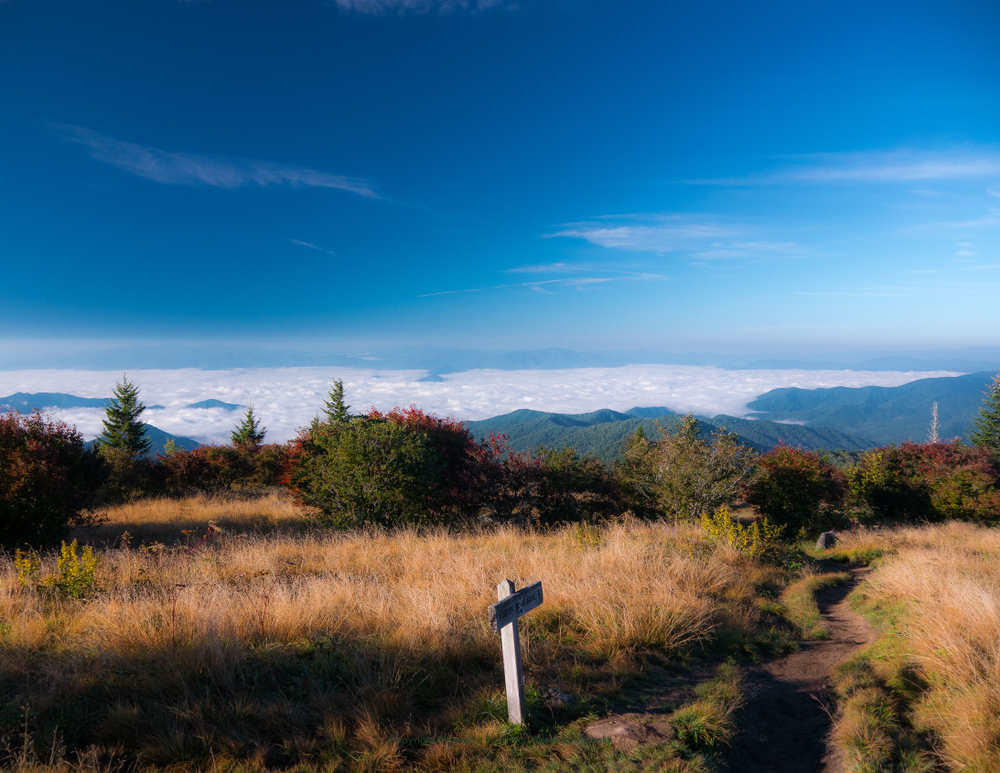
Andrews Bald is a 3.6-mile out-and-back hike that is rated as moderate due to its rocky terrain, with an elevation gain of about 900 feet. Since it’s located at the same parking lot as Clingmans Dome, many visitors to the national park tend to knock these two hikes out on the same day.
The hike leads you to the highest bald in the Great Smoky Mountain range, which is an open meadow that sits at a high elevation and provides sweeping views of the world around it.
The trail is composed mostly of dense forest that can get pretty chilly in the constant shade, and it opens up into a grassy meadow that is perfect for picnics and wildlife watching.
There’s a good chance you’ll find many blueberry and raspberry bushes along the way, with fresh fruit ready for picking and vibrant wildflowers scattered throughout.
It’s important to note that this trail can’t be reached during the winter months, and becomes more like a creek on rainy days – which can be a dangerous feat to tackle along the rocky terrain.
9. Abrams Falls

Although Abrams Falls is considered to be small in height at 20 feet, it makes up for it in volume as the water rushes over the edge in mass amounts. The aggressive set of falls is named after the Cherokee Chief who called this area home centuries ago.
The trail is about 5 miles roundtrip but takes about 4 hours to complete because of its moderate difficulty, rocky terrain, and usually wet conditions. In fact, the trail is considered to be one of the most dangerous hikes in the country because of the large list of people who have drowned attempting to tackle the falls.
You’ll know you’re approaching the falls when you hear the overpowering sound of gushing water. The views of the falls are truly breathtaking, but as tempting as the water may look, swimming is completely off-limits and visitors shouldn’t even attempt to climb any of the rocks bordering the falls.
Bear sightings are also very common, so always be aware of your surroundings and make sure to keep a safe distance if you spot one.
10. Go Wildlife Watching

Known for its abundance of wildlife, you’re guaranteed to spot your fair share of animals along your travels in the Great Smoky Mountain National Park. In fact, there are over 65 different species of mammals, 200 kinds of birds, 67 types of fish, and easily 80+ species of reptiles.
For those who aren’t familiar, the black bear is the iconic symbol of the Great Smokies – so it only makes sense that it’s one of the most frequent sightings within the park. There are about 1,500 black bears within the park, which equates to about 2 bears per square mile – so always keep your eyes out for one of these furry creatures.
Some of the most popular places to spot bears include:
- Cades Cove
- Roaring Fork Motor Nature Trail
- The Cataloochee Valley.
It’s important to note that regardless of what animals you spot along the way, whether it be bears, deer, elk, or coyotes, you should always keep a safe distance and enjoy their presence without interrupting their daily life.
11. See the Synchronous Fireflies
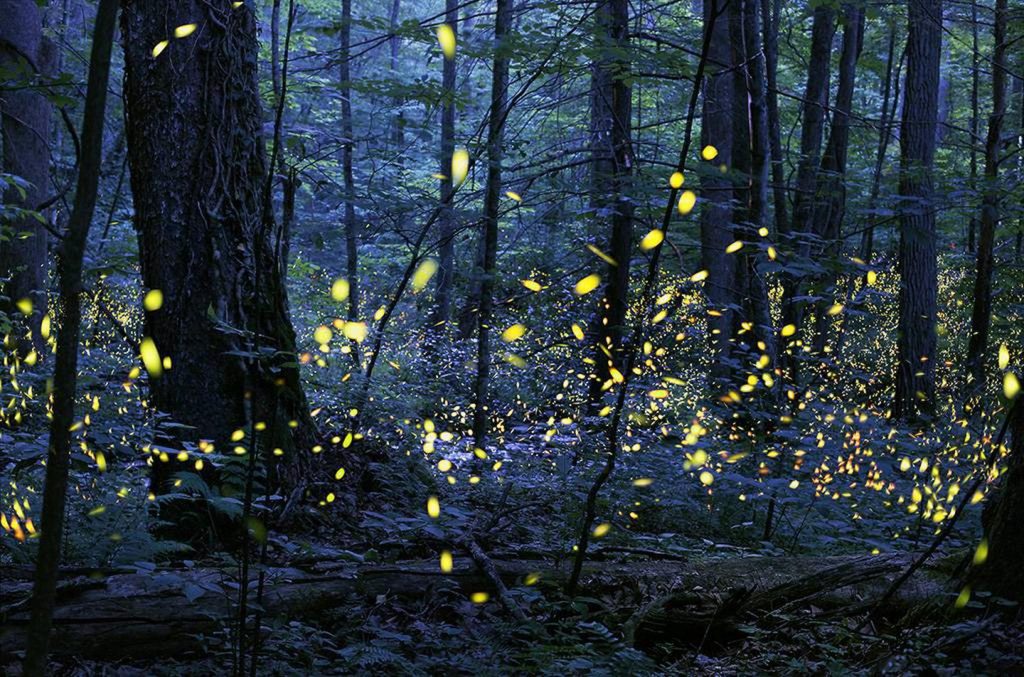
Website: https://www.recreation.gov/ticket/facility/233374
The Great Smoky Mountain National Park is known for having the largest population of synchronous fireflies in the country, let alone the western hemisphere. However, these fireflies have a very short lifespan, so in order to see this magnificent sight, you must be visiting the national park during their one-week-long mating season.
The exact week can vary based on weather conditions but it’s almost always in June, and the only way to score a spot to see these cool creatures is by joining the lottery for tickets at the end of April.
The attraction was once completely open to the public but due to large crowds disrupting the mating fireflies, the parks department has closed the area off for small groups each evening.
The natural light show can be found by the Elkmont Campground, and those with tickets can park in the Sugarlands Visitor Center before hopping on the trolley that takes you to the viewing area.
Bring a chair and sit back as the fireflies light up the night sky in unison for a show you won’t find anywhere else in the country.
12. Newfound Gap Road
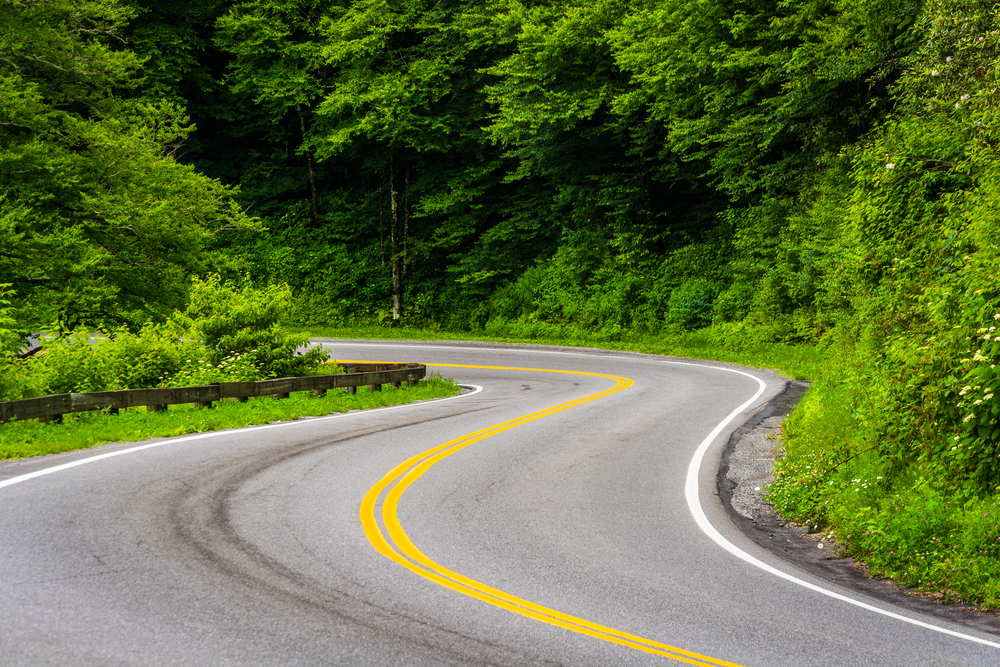
Almost every national park has a scenic road that’ll leave you awestruck, and Newfound Gap Road is definitely the Great Smoky Mountain National Park’s best.
The road winds through the national park for a total of 31 miles that takes you from the Sugarlands Visitor Center up to the Clingmans Dome parking area, and down into Cherokee, North Carolina.
The road holds a handful of records including being the lowest drivable pass in the park, the only road that travels through the heart of the park, and the only road within the park that is completely paved.
The scenic road climbs 3,000 feet as it takes you through the dense greenery that makes up the park, along many bodies of water, and provides pull-offs to stop and take in the views.
13. Grotto Falls Trail
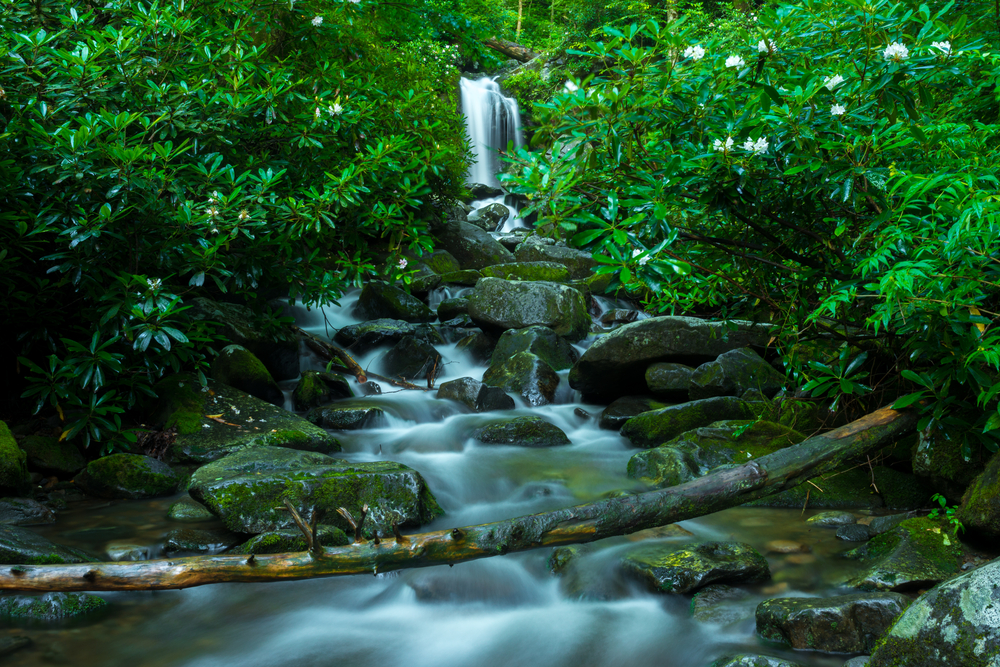
Known as the only trail that lets you walk behind the falls, the Grotto Falls Trail is extremely popular and the parking lot at the trailhead tends to fill up by early morning.
In order to reach the falls, you’ll need to take the Trillium Gap Trail which can be found on the Roaring Fork Motor Nature Trail route and is a moderate 3-miles, round trip.
Like most trails within the park, the conditions are quite rocky – so it’s important to wear a good pair of hiking shoes and never attempt to climb any of the rocks around the falls.
The best time to venture along this trail is in the spring when wildflowers are in full bloom and vibrant trilliums, violets, and breeches are scattered throughout.
Along the trail, you’ll cross footbridges over 4 streams, so no need to fear that you’ll get your feet wet along the way. Some visitors say that they get wet when walking behind the falls because of the mist it gives off, but the good news is that you won’t get drenched.
This unique hike gives visitors the opportunity to admire the beauty of waterfalls within the Great Smokies from a different angle and is one of the easier hikes available within the park.
14. Chimney Tops
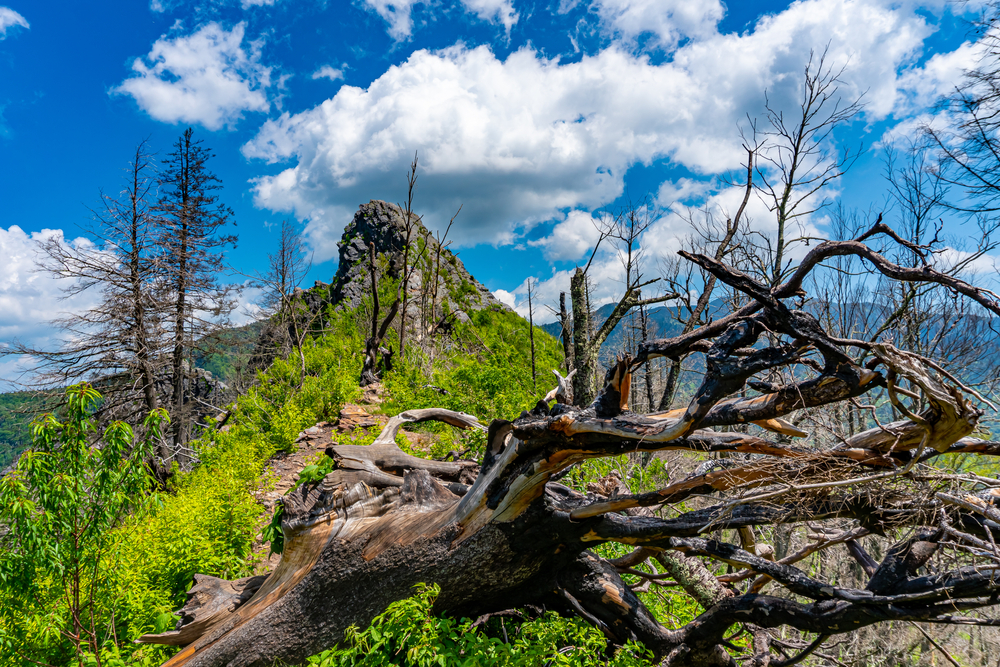
As one of the most popular hikes in the Great Smoky Mountain National Park, the Chimney Tops provide breathtaking views at both sunrise and sunset, so you can expect a busy trail regardless of the time.
The trail is under 4 miles roundtrip with a whopping 1,487 feet of elevation gain along the way that makes this hike a moderate difficulty level.
Due to the unfortunate fire that spread over 500 acres in 2016, Chimney Tops Trail was closed to the public for nearly a year while a new observation deck was created. The new observation deck not only provides a new perspective of the Chimney Top Pinnacles but also provides a wonderful view of the famous Mount Leconte.
The trail starts off pretty easy going without much elevation gain but makes up for it by the second mile with nearly 1,000 feet elevation in less than a mile that is sure to get your heart racing.
Although the trail is extremely popular because of its short length and panoramic views, many don’t make it to the top because of how steep it is – so keep this in mind, before starting your ascent. However, if you’re in good physical condition, you won’t find a view like this anywhere else in the park with its rocky peaks as the main attraction.
15. Alum Cave
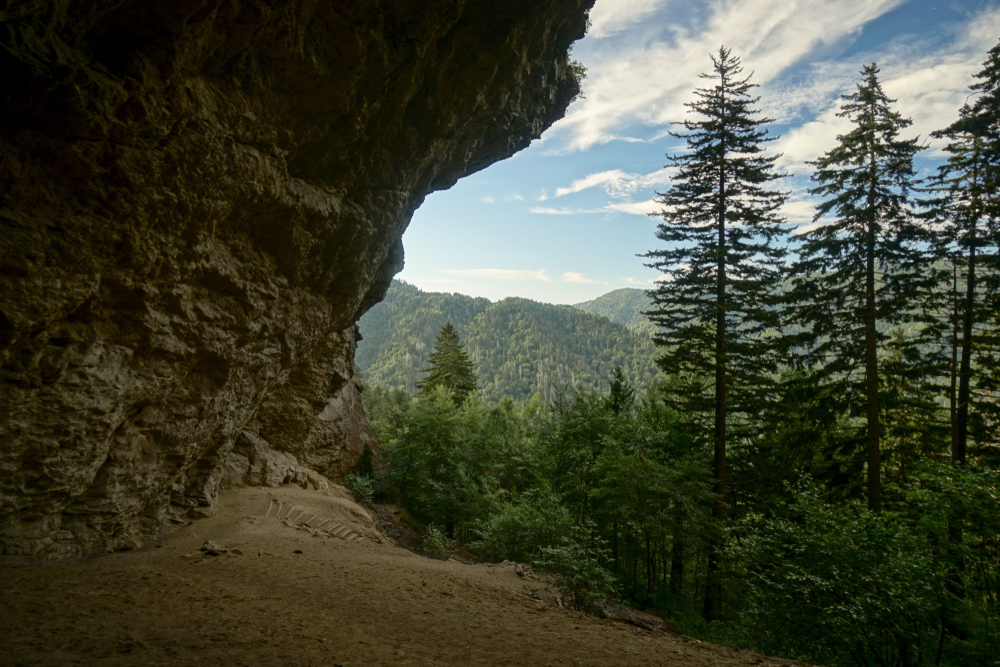
Another extremely popular hike just minutes from the Chimney Tops Trailhead is Alum Cave, and like its neighbor, this trailhead parking lot fills up quickly.
The trail has quite a few scenic stops along the way before reaching the famous alum cave’s breathtaking views, and the hike is 5 miles, both ways.
Although most hikers will turn around at the cave, more experienced travelers can continue on to the summit of Mount LeConte totaling out at 10 miles roundtrip.
Much of the trail takes you through a dense hardwood forest and many visitors enjoy the opportunity to hike through the tunnel of Arch Rock along the way.
As you reach the 2-mile mark, you’ll see the grassy bald that is Inspiration Point, and the views of the rugged terrain and smoky mountains are a wonderful sight.
Some are surprised to see that Alum Cave is not actually a cave, but rather a large concave in a bluff – but this is instantly forgotten when they fall in love with the breathtaking views that surround them.
16. Laurel Falls
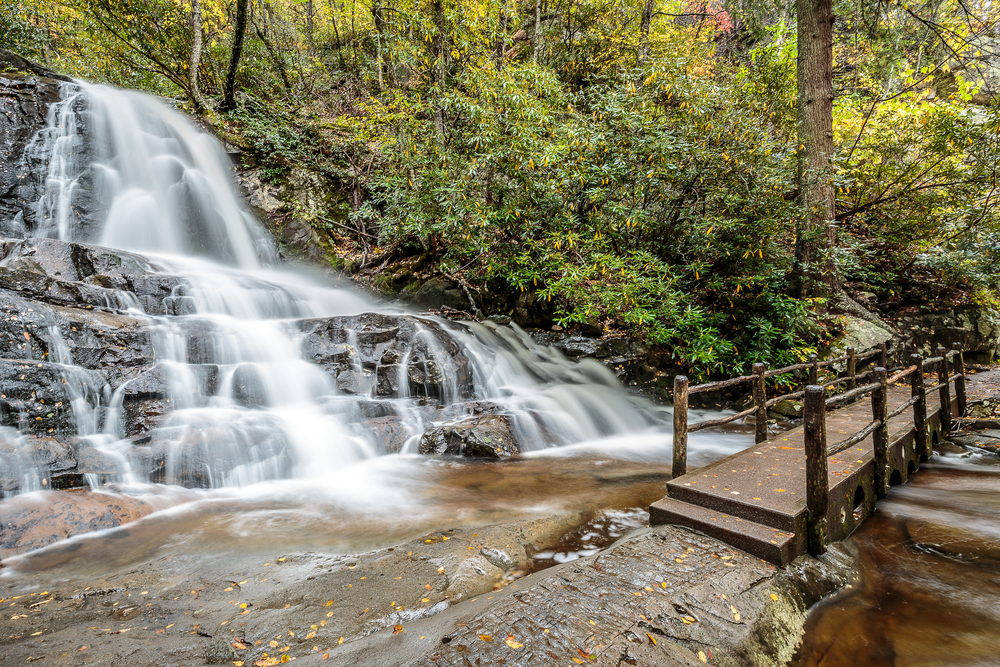
When it comes to waterfall hikes, Laurel Falls is the most popular hike in the national park because of its short, easy trail and stellar black bear sightings.
The trail is only 2.6 miles roundtrip, which is the shortest trail leading to a waterfall in the park and is mostly paved – making it accessible for almost all skill levels.
In fact, during the summer months, it’s said that the falls can attract nearly 2,000 visitors in a day so expect to see others along the trail with you regardless of the time.
Although the trail is considered to be paved and receives routine maintenance, the trail is no longer wheelchair accessible because of wear and tear.
Elevation gain is minimal, and within 1.3 miles you’ll reach the base of an 80-foot waterfall, which is made up of an upper and lower section with a footbridge for easy access to both.
17. Downtown Gatlinburg
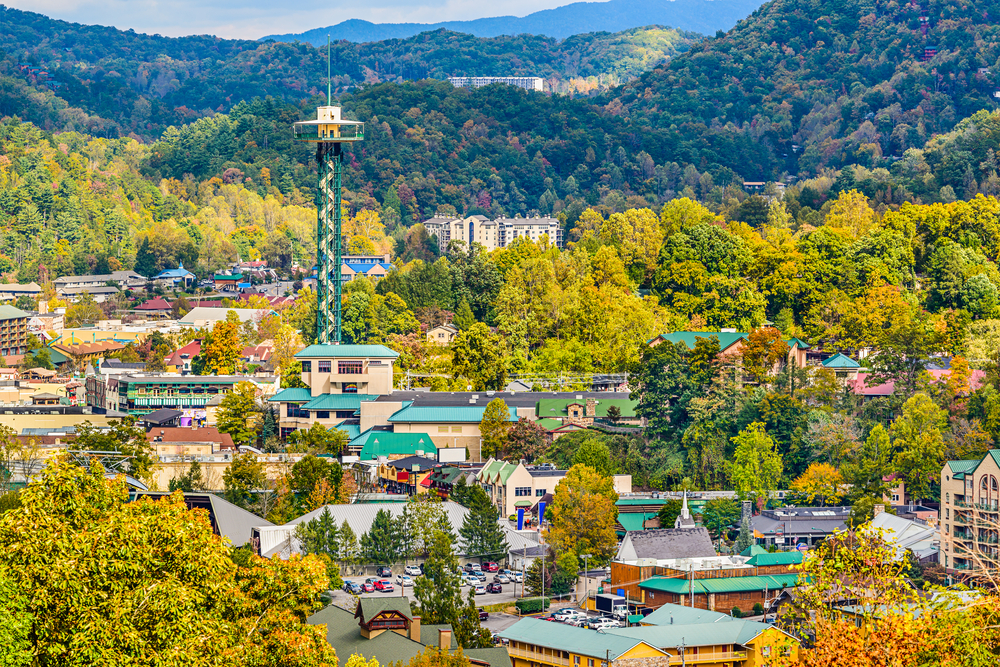
The city of Gatlinburg, one of the 3 mountain towns bordering the Great Smoky Mountain National Park, stands out amongst the rest for its abundance of shops, bars, and restaurants blended with its country charm.
There’s plenty to do downtown if you want to take a break from the great outdoors, including a variety of boutique shops, 2 moonshine distilleries, a local brewery, and popular restaurants like Crockett’s Breakfast Camp and their famous Frankenstein pancakes.
Hop from one bar to another, grab some tasty barbecue, or head up the gondola to Anakeesta where you can enjoy dinner with a view. This small village is nestled between the trees, providing breathtaking views of the surrounding mountains with its spacious dining patio and popular Treetop Skywalk.
Whether you’re stopping in for a quick lunch or spending the day relaxing in town, there’s something in Gatlinburg for everyone to enjoy.
18. The Sinks
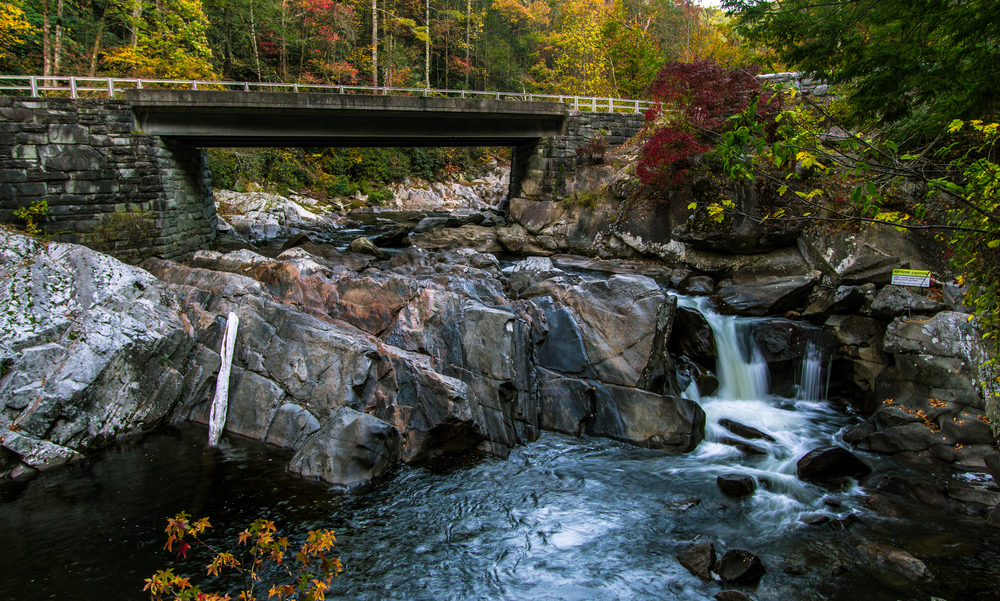
Located right off of Little River Road, the Sinks can be spotted from your vehicle on your way to Clingmans Dome but much of it is still hidden from sight, so you should definitely get out to enjoy the view.
The layers of natural pools that make up the Sinks are one of the most beautiful sights along the main roads of the Great Smoky Mountains, but the view only gets better when you get out of the car.
It’s one of the few waterfalls that can be admired without a hike and, although it’s only 15 feet tall, the large pools of water it creates are a sight to be seen.
Over time, the aggressive flow of water created a deep water hole perfect for swimming on hot days – but visitors should always proceed with caution and avoid areas with strong currents.
19. Elkmont Ghost Town

This hidden gem doesn’t have signs leading to it and it can’t be found on GPS – but if you make your way over to the Elkmont Campground you’ll find it at its furthest edge.
Unlike many other historic buildings located throughout the national park, this cluster of houses was built in the 18th century – so all of the abandoned homes portray more recent times.
In 1901, the production of the Little River Lumber Company and the railroad to transport materials played a major role in the development of these vacation homes. The resort community was established by wealthy families looking for nearby getaways from Knoxville, but when the area became part of the national park in 1934, people were slowly forced to abandon their homes.
Today, after many years without care, the park service has been working on painstakingly restoring these wealthy homes and you can spend hours walking between and inside their completed projects.
Although much of the houses were built with new materials to ensure the safety of visitors, you’ll notice small touches throughout every house that was saved from the original build.
20. Cataloochee Valley

Known as one of the most remote parts of the Great Smoky Mountain National Park, the Cataloochee Valley is the perfect place to escape the craziness of the park’s more popular areas – and the views along the way are hard to beat.
One of the main reasons that people travel to the valley is for a chance to see the majestic elk that seem to hang out in herds throughout the area. Aside from the sightings of this beautiful animal, there are many historic buildings and hiking trails that’ll keep you busy all day long.
Of the 9 buildings found in the valley, 5 can be seen right from the scenic road, and the other 4 are nestled away on the Little Cataloochee Trail.
If you’re planning a trip to the Great Smoky Mountain National Park, be sure to check out our guide to the 30 Best Hotels near The Great Smoky Mountains National Park to make planning your stay a breeze.










